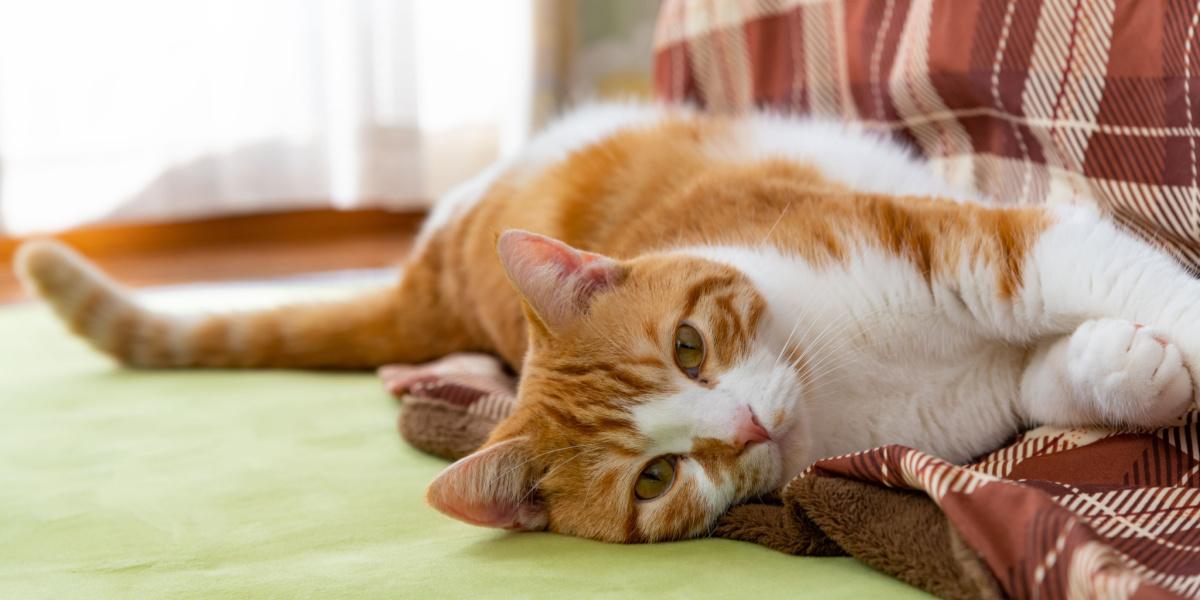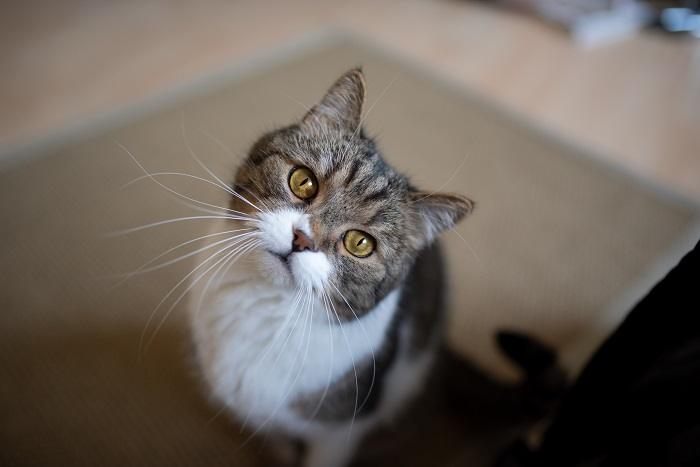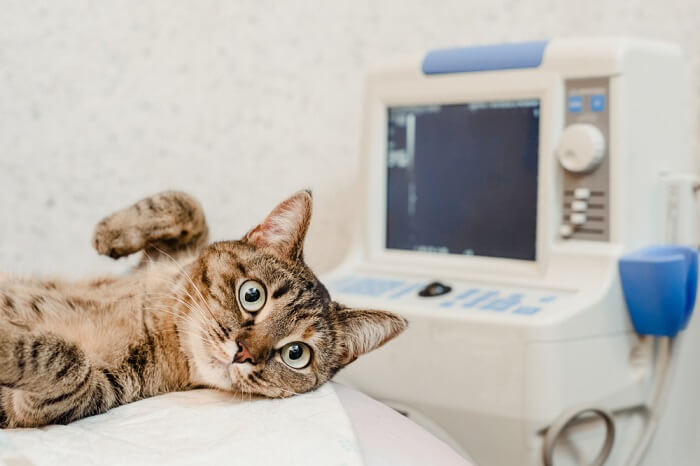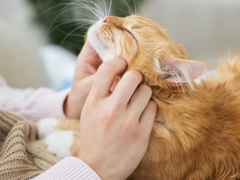The aim of this article is to explain to cat carers the reasons why cats may develop ataxia, how to identify it, and what to do to help cats suffering from this common problem.
Quick Overview: Ataxia In Cats
Urgency: Mild ataxia but is otherwise well, then the situation can be monitored and reviewed when the daytime veterinarian opens. If a cat has sudden onset significant ataxia, then they need to be taken to the emergency veterinarian urgently (e.g. toxicities).
Treatment Options: Treatment for ataxia always depends on the precise underlying cause.
May be Linked to: Vestibular Syndrome, Viral infections (such as Feline Panleukopenia of pregnant cats), Anemia, Hypoglycemia, Toxicities, Trauma, Spinal cord disease
Requires Ongoing Medication: Ongoing medication is not usually needed for ataxia unless a cat has a specific underlying cause (such as high blood pressure) that may need ongoing medication.
Common Symptoms: Staggering, losing footing when jumping down Moving in a less coordinated way than normal Circling, rolling, or falling down Nystagmus (eyes flicking from side to side) Head tilt, Inability to move legs or place feet normally when walking, jumping or vomiting.
Other Names: Wobbly cats, vestibulitis
What Does It Mean When a Cat Suffers From Ataxia?
Ataxia is defined as “difficulty with coordination and walking, with loss of balance”. Affected (“ataxic”) cats suffer an internal sensation of dizziness or clumsiness, but they cannot tell us this. We need to observe them ourselves to appreciate that they have ataxia.
Signs include walking with an abnormal gait, having difficulty walking around, jumping up or down, or struggling to climb stairs. We may also see cats walking in circles, swaying, having muscle tremors, or moving their heads in odd ways, sometimes cocked to one side.
The most important observation is that a cat simply is not moving around normally: it’s easy to notice this simple fact, and it can be more difficult to accurately describe the specific abnormalities shown by an ataxic cat.
Some vets have describe affected cats as “wobbly cats” and that can be a useful way to summarize this problem.
Ataxia can be divided into two sub-groups depending on which part of the cat is affected.
- Generalised ataxia – caused by a central problem in the skull, neck or a general illness.
- Localised ataxia – most often hindlimb ataxia, but could also be forelimb ataxia, when the signs of lack of coordination only affect one part of the cat’s body.
Also Read: Why Do Cats Arch Their Backs? Top 8 Reasons
How Common Is Ataxia in Cats?
Ataxia is a common sign in cats of all ages, with a number of possible causes.
What Causes Ataxia in Cats?
The possible types of cause depends on the type of ataxia.
Generalized Ataxia
Generalized, non-specific illnesses may be the most common cause of ataxia: if a cat is feeling weak or unwell, they commonly become less coordinated and less able to move around. A cat with hypoglycemia (low blood sugar) may show signs of ataxia. A cat with anemia may be ataxic because of weakness.
Many different types of central nervous system (brain) disease can cause generalized ataxia, including a number of poisonings which includes toxins like slug bait, cannabis, and others.
Rarely, a cat may be born with a congenital brain abnormality (e.g. cerebellar hypoplasia in kittens, where the cerebellum does not form normally in utero due to the mother having panleukopenia virus) which can cause ataxia.
Some nutritional problems (eg thiamine deficiency) can cause generalised ataxia.
Brain hemorrhages or clots (“a stroke”) can cause ataxia.
Rare brain diseases such as meningitis can affect the brain, causing ataxia.
Vestibular disease (or vestibular syndrome) is the most common cause of a more specific type of generalized ataxia (known as vestibular ataxia): this means disease of the vestibular system, which is the anatomical area that controls balance, including the middle ear, inner ear and parts of the brain.
Possible causes of vestibular disease include idiopathic (i.e. we can’t identify the cause, despite all tests), as well as middle or inner ear infection, nasopharyngeal polyps, head trauma, brain hemorrhage, some specific toxicities (e.g. reactions to specific antibiotics), and tumors.
Generalized ataxia can also be subdivided into groups depending on what part of the brain is causing the problem e.g. if the cerebellum is the source of ataxia, this is known as cerebellar ataxia, while if the brainstem is the focus, a different type of ataxia will be seen.
Also Read: Brain Tumors In Cats: Causes, Symptoms, & Treatment
Localized Ataxia (e.g. Forelimb or Hindlimb)
Localized ataxia usually affects either forelimbs or hindlimbs and is easily confused with partial paralysis
Any condition which disrupts the nerve supply to a limb can caused localized ataxia affecting that limb (or pair of limbs). Examples include spinal disc disease, which if in the neck can affect both forelegs and hindlegs, or if the spinal canal lesion is in the mid or lower back, can cause ataxia of just the hindlegs.
Other causes can include localized injury (e.g. a fractured pelvis can cause hindlimb ataxia) or tumors placing pressure on the immediate nerve supply to a limb (e.g. a tumour of the axillary nerve in the forelimb could cause ataxia of just one forelimb).
Also Read: Why Do Cats Roll Around On Their Back?
Symptoms of Ataxia
Cats that are suffering from ataxia may show the following signs:
Generalized Ataxia
- Staggering, losing footing when jumping down
- Moving in a less coordinated way than normal
- Circling, rolling, or falling down
- Nystagmus (eyes flicking from side to side)
- Head tilt
- Inability to move legs well, or place feet normally when walking or jumping
- Vomiting is sometimes seen at the same time
Localized Ataxia
- Inability to place a leg or pair of legs on the ground in normal coordinated way
- Foot being placed wider out or closer in than normal
Investigating Ataxia
Any cat that develops ataxia should be taken to your DVM veterinarian without delay, so that the underlying problem can be identified and so that treatment can be given.
If the ataxia is mild, and your cat still seems very well generally, you can visit your normal daytime veterinarian. However if there is serious, sudden onset ataxia, then you should go to the emergency veterinary service.
Your veterinarian may take the following steps.
1. Detailed History Taking
Your vet will discuss every aspect of your cat’s condition and review their overall cat health. There are a number of different possible causes of ataxia, and this careful history gathering will help to pinpoint the cause.
Many factors are important in this history e.g. senior cats are more prone to certain problems than younger cats, cats that are free-ranging are more prone to some problems than indoor-only cats (e.g. poisoning, road accidents, etc).
A dietary history is important: what sort of cat food does your cat eat? Has a new food been started recently? Could they have eaten anything else? Cat owners should carefully observe their pet’s behavior in the kitty litter box. Is the cat urinating and defecating normally?
It can help if you have taken video footage on your phone showing evidence of your cat’s ataxia (e.g. stumbling when jumping down, etc).
2. Physical Examination
Your veterinarian will check your cat’s body carefully all over, feeling the cat all over, checking for any abnormalities. This will normally include taking the cat’s temperature, listening to their chest with a stethoscope and weighing the cat.
They will normally carry out a full neurological examination which involves testing the various reflexes around the body, checking the eyes closely, and trying to localize the full extent of the ataxia as clearly as possible.
If the cat has proprioceptive ataxia (absence of the ability to know when a foot is placed in the right place due to nerve issues) the vet will be able to detect this, and the particular nerve trunk involved can be identified. They may allow your cat to move around the consulting room, watching them walk, jump, and climb to try to assess the level of ataxia.
3. Routine Blood And Urine Tests
It’s very likely that your veterinarian may carry out blood work, including the usual panel of diagnostic tests, such as hematology (blood count) and biochemistry profiles (including electrolytes). Simple urinalysis tests may also be carried out.
This type of work up is known as the minimum database, and it’s carried out to review most sick cats, regardless of the signs of illness. It provides important background information about the health of your cat. Liver and kidney disease will be ruled out as contributing causes in most cases.
4. Specialised Blood Tests
Your veterinarian may recommend specific blood tests, such as total T4 (to rule out hyperthyroidism, which can contribute to some cases of ataxia), as well as tests for some viral infections such as FeLV and FIV, since there are significant implications if your cat is positive for either of these.
5. Additional Testing
A full diagnostic work up for ataxia may include x-rays, ultrasound or other diagnostic imaging techniques
Radiography (x-rays) and ultrasound examinations may be recommended to visualise different parts of your cat’s body which could contribute to the ataxia (e.g. x-rays of the pelvis if a cat has hindlimb ataxia). Depending on the case, more detailed diagnostic imaging (such as CT scans or Magnetic Resonance Imaging – MRI – scans) may be recommended to visualise details of the brain and inner ear.
Blood pressure measurement may be carried out, as high blood pressure can contribute to brain hemorrhages which can lead to ataxia..
How Much Does It Cost To Treat A Cat With Ataxia?
The cost depends entirely on the cause of the ataxia, and it may be less than $150 if a cat has a simple type of ataxia linked to mild toxicity of some kind, to over $6000 if a cat has ataxia caused by a complex problem such as cancer.
Can Ataxia Be Treated?
Treatment for ataxia depends on the cause, and yes, it can usually be treated in helpful ways.
What Specific Ataxia Treatment Is Available For Ataxia?
Treatment for ataxia always depends on the precise underlying cause.
If a cat has a generalised non-specific illnesses causing ataxia and weakness, the primary aim is specific treatment of this underlying condition.
Cats that are ataxic due to poisoning (including slug bait, cannabis, and others) need the usual intensive supportive care for poisoning: the hope is that once the body has fully metabolized and eradicated the poison, the signs of ataxia will resolve.
If the ataxia is caused by vestibular disease, treatment of the underlying inner ear disease, nasopharyngeal polyps, head trauma, brain hemorrhage or tumors needs to be given.
If there is localised ataxia caused by non-functioning of the spinal cord or nerve, this needs to be specifically treated, which could involve a medical approach (rest and anti-inflammatory medication) or a surgical approach (e.g. surgery on the spine to remove a spinal cord lesion).
Signs that commonly accompany ataxia (such as nausea) may also be treated at the same time (e.g. using anti-nausea medications)
Home remedies should not be used for cats with ataxia; the individualized professional advice of a veterinarian needs to be followed closely.
Also Read: Cat Nausea: Causes, Symptoms, & Treatment
Monitoring And Prognosis
The degree of monitoring needed depends on the individual case, but in general, cats with ataxia need frequent rechecks by their DVM veterinarian until they have returned to normal.
The prognosis depends entirely on the individual case and the underlying cause of ataxia. Your own veterinarian will be able to give you the best answer to this question.
Conclusion
Ataxia, both generalized and localized, is a common problem in cats of all ages, and it’s always important to have veterinary input to ensure that affected cats are given the best possible chance of making a full recovery.
Also Read: Conjunctivitis In Cats: Causes, Symptoms, & Treatment
FAQ on ataxia in cats
What can cause ataxia in cats?
There are many causes, from generalised non-specific illnesses causing weakness and general unwellness, to many different types of brain disease can cause ataxia, including poisonings (including slug bait, cannabis, and others), to vestibular disease, which itself has many causes such as idiopathic, inner ear disease, nasopharyngeal polyps, head trauma, brain hemorrhage, some specific toxicities, and tumors.
How do I know if my cat has ataxia?
If your cat seems incoordinated, not moving around normally, and perhaps staggering, falling when jumping, walking in a wobbly way, then they probably have ataxia.
How serious is ataxia in cats?
Ataxia is a serious condition that requires investigation and treatment by your DVM veterinarian.
Is there a vaccine for cat Ataxia?
There is no vaccine for ataxia, other than the vaccine for feline panleukopenia which all cats should have as kittens; if an unvaccinated cat becomes pregnant, and she then picks up the viral infection during pregnancy, it is likely that her kittens will develop cerebellar ataxia due to this part of the brain failing to develop normally due to the virus.










